Skin rash that looks like bites. Hives (Urticaria): Causes, Symptoms, and Effective Treatment Strategies
What are the common triggers for hives. How can hives be effectively treated at home. When should you seek emergency medical attention for hives. What are the long-term management strategies for chronic hives.
Understanding Hives: More Than Just a Skin Rash
Hives, medically known as urticaria, are a common skin condition affecting approximately 20% of the population at some point in their lives. These red, raised bumps on the skin can be incredibly itchy and uncomfortable, often resembling insect bites. But what exactly are hives, and why do they occur?
Hives are the result of the body’s release of histamine, a chemical involved in the immune response. This release can be triggered by various factors, ranging from allergies to stress and infections. The resulting skin reaction can manifest as small, mosquito-bite-like bumps or larger welts several inches in diameter.
Key Characteristics of Hives
- Can appear anywhere on the body
- May be singular or occur in groups
- Often change location on the body over time
- Can resolve quickly or persist for weeks or months
- Frequently accompanied by skin swelling, especially in areas like lips, ears, and fingers
Identifying the Culprits: Common Causes of Hives
Understanding the triggers for hives is crucial for effective management and prevention. While many assume allergies are the primary cause, non-allergic triggers are actually more common. Let’s explore both categories:

Non-Allergic Triggers
- Viral infections (e.g., common cold, strep throat)
- Emotional stress
- Exercise-induced heat
- Vibrations from activities like lawn mowing or horseback riding
- Extreme temperatures
- Sun exposure or artificial UV light
- Pressure on the skin from tight clothing or vigorous rubbing
Allergic Triggers
- Foods (e.g., eggs, peanuts, tree nuts, milk, shellfish)
- Medications (e.g., aspirin, ibuprofen, naproxen sodium)
- Skin irritants (plants, grasses, weeds, acidic foods)
- Animal dander
- Latex
Can hives be a sign of a more serious condition? In some cases, hives may be part of a severe allergic reaction called anaphylaxis. This life-threatening condition requires immediate medical attention and can cause symptoms such as difficulty breathing, swelling of the mouth or tongue, and nausea or vomiting.
Navigating Treatment Options: From Home Remedies to Medical Interventions
Treating hives effectively involves addressing both the symptoms and the underlying cause. The severity of the condition often dictates the treatment approach. Here’s a comprehensive look at various treatment strategies:
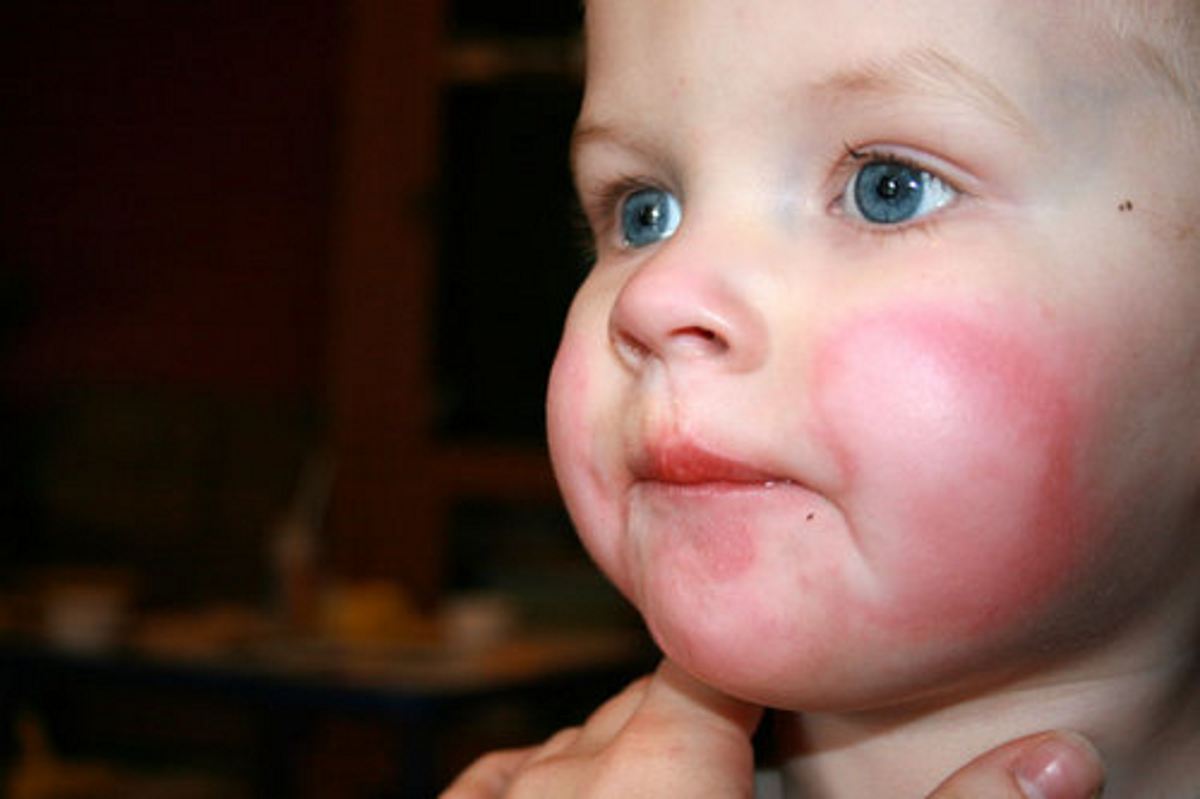
Home Remedies for Mild Hives
- Over-the-counter antihistamines (e.g., loratadine, fexofenadine, cetirizine)
- Cooling the skin with ice packs or cold showers
- Distraction techniques to minimize scratching
- Avoiding known triggers
Medical Treatments for Severe Hives
- Higher doses of antihistamines
- Short-term use of oral steroids like prednisone
- Prescription medications such as Xolair® injections for chronic cases
Is it safe to use topical antihistamine creams for hives? Contrary to popular belief, Benadryl® creams and similar topical antihistamines are not recommended for hives. These products can potentially cause irritating rashes, exacerbating the condition rather than providing relief.
When Hives Become an Emergency: Recognizing Anaphylaxis
While most cases of hives are uncomfortable but not dangerous, it’s crucial to be aware of the signs of anaphylaxis, a severe allergic reaction that can be life-threatening. Immediate medical attention is necessary if hives are accompanied by:

- Difficulty breathing, swallowing, or speaking
- Swelling of the mouth or tongue
- Nausea or vomiting
In cases of known severe allergies, it’s essential to have an epinephrine auto-injector (like EpiPen®, Auvi-Q®, or Adrenaclick®) on hand and to use it immediately if anaphylaxis is suspected.
Living with Chronic Hives: Strategies for Long-Term Management
For individuals dealing with persistent or recurrent hives, developing a comprehensive management plan is crucial. This approach often involves a combination of medical treatments and lifestyle adjustments:
Identifying Triggers
Keeping a detailed diary of events preceding hive outbreaks can help identify potential triggers. This information can be invaluable in developing avoidance strategies and tailoring treatment plans.
Lifestyle Modifications
- Avoiding scratching or rubbing the skin
- Maintaining good hand hygiene
- Wearing loose, breathable clothing
- Managing stress through relaxation techniques or counseling
Regular Medical Follow-ups
For chronic cases, ongoing consultation with a dermatologist or allergist may be necessary to adjust treatment plans and explore new therapeutic options as they become available.

Can chronic hives be cured? While there’s no definitive cure for chronic hives, many individuals find that their symptoms improve or resolve over time with proper management and treatment. Some cases may persist for months or even years, but advances in medical treatments continue to offer new hope for long-term relief.
Hives in Children: Special Considerations and Approaches
When it comes to hives in children, there are unique challenges and considerations to keep in mind. Parents and caregivers play a crucial role in managing this condition effectively:
Age-Appropriate Communication
Explaining hives to children in a way they can understand helps reduce anxiety and promotes cooperation with treatment. Using simple analogies or picture books can be helpful.
Distraction Techniques
Engaging children in activities like games, singing, or reading can help take their mind off the itching and reduce the urge to scratch.
Safe Medication Administration
Ensure that any medications, particularly antihistamines, are given in age-appropriate doses. Always consult with a pediatrician before starting any new treatments.
:max_bytes(150000):strip_icc()/mast-cell-activation-overview-4583920_final-e0d23ecb82b44e01a6e8ae3536571c76.png)
School and Childcare Considerations
Communicate with teachers and caregivers about your child’s condition, triggers, and any necessary precautions or treatments.
How can parents help children cope with the emotional impact of chronic hives? Encouraging open communication, providing reassurance, and focusing on activities the child enjoys can help maintain a positive outlook. In some cases, connecting with support groups or child psychologists specializing in chronic conditions may be beneficial.
The Future of Hives Treatment: Emerging Research and Therapies
As our understanding of hives and their underlying mechanisms continues to evolve, new treatment options are emerging. Here’s a glimpse into some promising areas of research:
Targeted Biologics
Medications like omalizumab (Xolair®) have shown significant promise in treating chronic hives by targeting specific immune pathways. Research into other biologic therapies is ongoing.
Immunomodulatory Approaches
Scientists are exploring ways to “retrain” the immune system to prevent overreaction, potentially offering long-term relief for chronic hives sufferers.
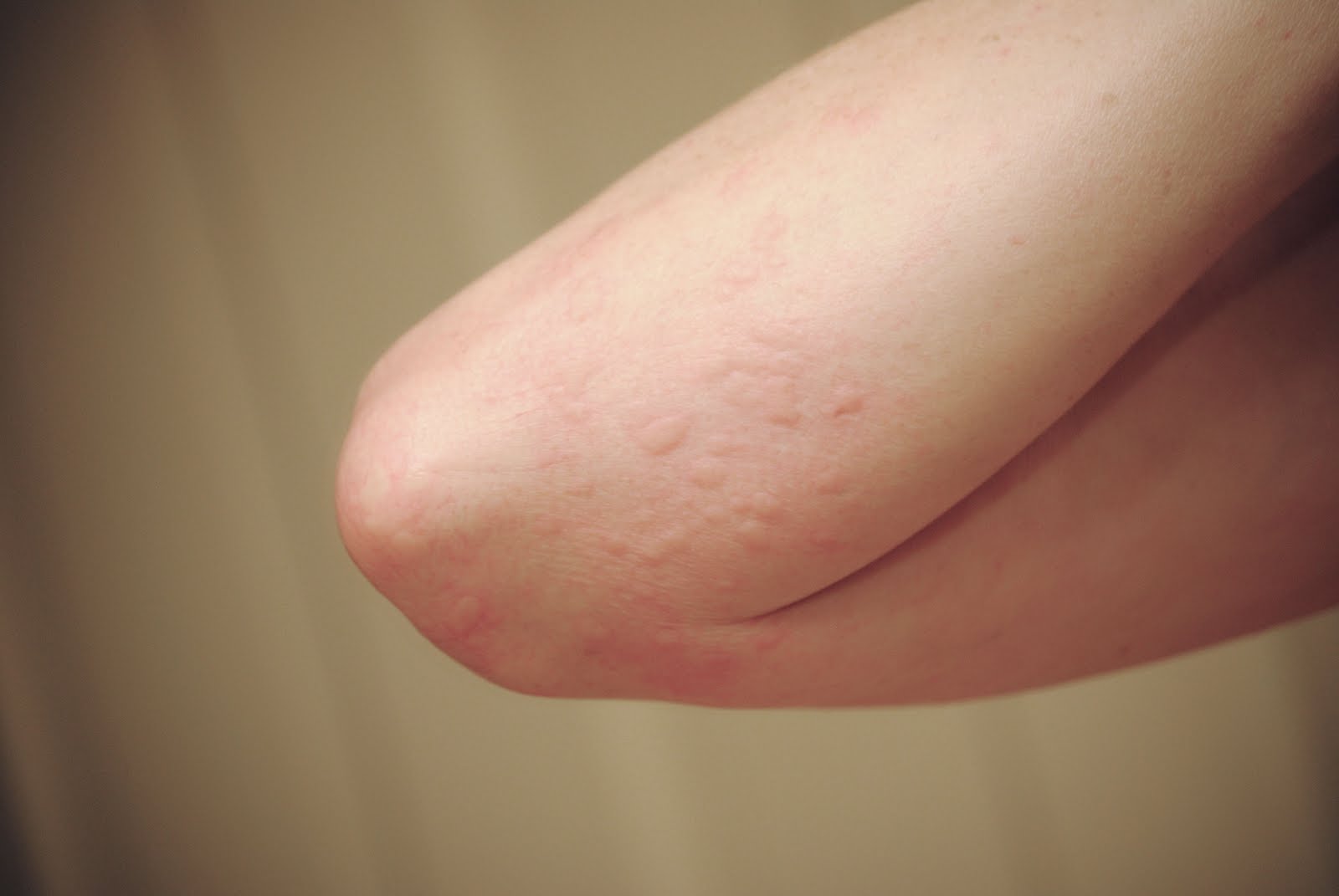
Personalized Medicine
Advances in genetic testing and biomarker identification may lead to more tailored treatment approaches, improving efficacy and reducing side effects.
Alternative Therapies
Research into the potential benefits of treatments like acupuncture, herbal medicines, and dietary interventions for hives management is ongoing, though more rigorous studies are needed to establish their effectiveness.
What role might artificial intelligence play in the future of hives diagnosis and treatment? AI-powered image analysis tools could potentially assist in faster, more accurate diagnosis of hives and differentiation from other skin conditions. Machine learning algorithms might also help predict individual treatment responses, leading to more personalized and effective management strategies.
Debunking Myths: Common Misconceptions About Hives
Despite being a relatively common condition, hives are surrounded by numerous myths and misconceptions. Let’s address some of these to provide a clearer understanding:
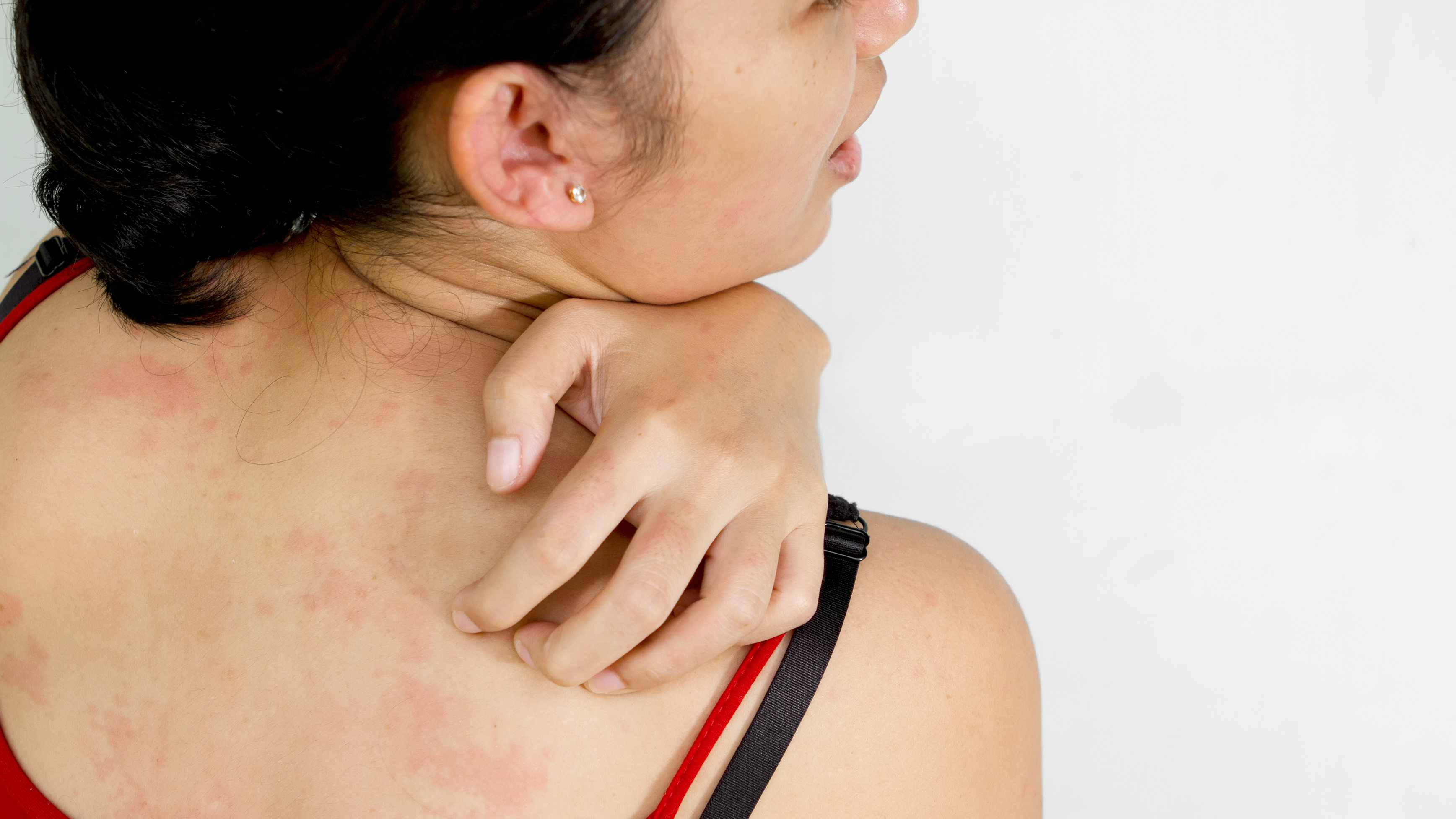
Myth: Hives are Always Caused by Allergies
Reality: While allergies can trigger hives, non-allergic causes such as stress, infections, and physical factors are actually more common.
Myth: Hives are Contagious
Reality: Hives are not contagious and cannot be spread from person to person through contact.
Myth: Hives Always Itch
Reality: While itching is a common symptom, some people may experience hives without significant itching.
Myth: Antihistamines Always Provide Immediate Relief
Reality: While antihistamines are effective for many, they may not provide instant relief for everyone. Some individuals may require higher doses or different types of medications.
Myth: Food is the Most Common Trigger for Hives
Reality: While food allergies can cause hives, they are not the most common trigger. Environmental factors, stress, and infections are more frequent culprits.
How can individuals separate fact from fiction when researching hives online? It’s crucial to rely on reputable medical sources and consult with healthcare professionals for accurate, up-to-date information. Be wary of anecdotal evidence or claims of “miracle cures” that lack scientific backing.

In conclusion, hives remain a complex and often challenging condition to manage. However, with a comprehensive understanding of triggers, treatment options, and emerging research, individuals affected by hives can work towards effective management and improved quality of life. As always, consultation with healthcare professionals is crucial for personalized advice and treatment plans.
Hives (Urticaria): Causes, Treatment and Prevention
Nationwide Children’s Hospital
Overview
Signs & Symptoms
Causes
Treatment
What to Expect
When to Seek Help
What Are Hives?
Hives are red, raised bumps on the skin that can be itchy. Hives are also called urticaria. About 1 in 5 people will get hives at some point in their lives.
What Are the Signs and Symptoms of Hives?
Hives can be found anywhere on the body. They can be small, like mosquito bites, or several inches wide. Even if they look different, hives often have common symptoms.
- People may have one hive or groups of hives that cover large areas of the body.

- Hives can move around on the body. They may start in one place, then move to another place on the body.
- Hives may go away quickly or come and go for many weeks or months.
- Skin swelling is common with hives. It may happen on the lips, ears, eyelids, fingers, or toes. This is common and not dangerous.
- Less commonly, hives can occur as part of a more severe allergic reaction called anaphylaxis. Anaphylaxis can cause the airway to swell, making it hard to breathe. This is a life-threatening reaction that needs to be treated right away.
What Causes Hives?
Hives happen when the body releases a chemical called histamine. It can be released because of allergies or other things, like stress, infections, or some illnesses. Whatever is causing histamine to be released is called a trigger.
- Hives not related to allergies are more common. Their triggers are:
- Viruses or infections, like a cold, strep throat, or a urinary tract infection (UTI).

- Emotional stress, like anxiety, anger, fear, or sadness.
- Exercises that make the body warm.
- Vibrations from using a lawn mower, horseback riding, or mountain biking.
- Temperatures that are too hot or too cold.
- Sunlight or tanning beds (sunlamps).
- Pressure on the skin, like being rubbed too hard or scratched, or by wearing clothes that are too tight.
- Viruses or infections, like a cold, strep throat, or a urinary tract infection (UTI).
Hives that are related to allergies are less common. Their triggers are:
- Foods or medicines (anaphylaxis may occur) – Symptoms include nausea, throwing up (vomiting), mouth/throat swelling, and trouble breathing. This can be very dangerous.
- Some common foods that cause allergies include eggs, peanuts, tree nuts, milk, and shellfish.
- Some medicines that cause allergies include aspirin, ibuprofen (Advil®, Motrin®), and naproxen sodium (Aleve®).

- Contact with the skin that can lead to irritation. These are usually not dangerous.
- Plants, grasses, weeds
- Acidic foods or sauces
- Scents or fragrances (soaps, detergents, lotions)
- Animal dander
- Latex or other materials
When to Get Emergency Help
Call 911 or take your child to the closest emergency room if they have hives and any symptoms of anaphylaxis:
- Trouble breathing, swallowing, or talking
- Swelling of the mouth or tongue
- Nausea or vomiting
If they have an epinephrine auto-injector, like EpiPen®, Auvi-Q®, or Adrenaclick®, use it right away.
How Are Hives Treated?
Treatment depends on how bad the itching is. Even with treatment, hives can last days to weeks. The goals of treatment are to:
- Control the itching
- Avoid things that may trigger hives
For mild hives:
- Give an over-the-counter (OTC) antihistamine each day.
 Some examples are:
Some examples are:- Loratadine (Claritin®)
- Fexofenadine (Allegra®)
- Cetirizine (Zyrtec®)
- Levocetirizine (Xyzal®)
- Do not use Benadryl® creams. These may cause irritating rashes.
- Cool the skin using an ice pack or a cold bath or shower.
- Distract your child by playing games, singing songs, or reading books.
- Avoid known triggers, like animal dander or fragrance.
For severe hives:
- Give a higher dose of antihistamines or steroids, like prednisone. Oral steroids should not be used a lot. They may make hives worse when you stop taking the medicine.
- See a doctor or health care provider. They may prescribe a medicine, like Xolair® shots (injections), if you have long-term (chronic) hives.
Living With Hives
Living with hives isn’t easy, especially if you don’t know what’s causing them. It may help if you write down events that happened right before the hives appeared. This can help you and your child make a plan to keep the hives from coming back.
This can help you and your child make a plan to keep the hives from coming back.
Depending on what’s causing your child’s hives, you can keep their hives from getting worse by having them:
- Avoid scratching or rubbing their skin.
- Wash their hands after touching pets or animals.
- Wear loose-fitting clothes. • Wear warm clothes.
- Wear sunblock and long sleeves and pants in the sun.
- Avoid contact with cold water if they’re sensitive to cold.
- Use mild, unscented soap on their skin and for washing clothes.
When to Call the Doctor
Call the doctor or health care provider if your child’s hives get worse or prescribed medicine isn’t helping.
Hives (Urticaria) (PDF), Spanish (PDF), Somali (PDF)
HH-I-82 11/89, Revised 2023, Nationwide Children’s Hospital
Next Steps
Request an Appointment
or
Get a Second Opinion
You Might Also Be Interested In
Blog
Allergic Reactions to Stings and Bites
The day before I was to have my senior picture taken in high school, I was stung on my right hand by a wasp. My entire hand and wrist swelled to about three times its normal size.
My entire hand and wrist swelled to about three times its normal size.
Podcast
PediaCast 039: Pediatricians, Hives and Sleep Apnea
In this episode of PediaCast, Dr. Mike discusses hives, sleep apnea and slimming down for summer. We’ll also answer some user questions and talk about board-certified pediatricians.
700 Children’s Blog
If you have a child – or care for a child – 700 Children’s was created especially for you. Our blog gives you access to the most current pediatric news and research.
Itchy bumps on skin like mosquito bites: What are they?
Several skin conditions can cause itchy lumps that resemble bug bites. These include allergic reactions, infections, and chronic conditions.
These include allergic reactions, infections, and chronic conditions.
Most people experience this symptom at some point. Itchy bumps can appear as a result of allergies, infections, insects, and, sometimes, nonidentified factors.
However, there is one general principle that the American College of Allergy, Asthma & Immunology recommend people to follow when their skin itches: Do not scratch it.
Additional general self-care practices for itchy skin include:
- bathing frequently in lukewarm water
- using gentle, hypoallergenic soap
- limiting exposure to the sun
- applying cold compresses
- avoiding tight clothing in areas where itchy bumps appear
Understanding the different conditions that can cause itchy bumps on the skin can help people get appropriate treatment. Depending on the cause, treatment can range from avoiding certain foods to taking prescription medications.
Keep reading to learn more about some common causes of itchy bumps that look like mosquito bites and how to treat them.
The medical term for hives is urticaria, and it describes a condition that produces raised itchy areas on the skin. If a person notices bumps on the skin that resemble mosquito bites but has not had any exposure to mosquitos, the cause is probably acute urticaria. The term “acute” means that the condition does not last longer than 6 weeks.
Hives are very common, affecting about 20% of people at some point in their lives. Certain kinds of foods, such as peanuts, tree nuts, and seafood, cause hives in many people due to an allergic reaction. Latex, pollen, insects, various plants, and some medications, such as sulfa drugs or even aspirin, may also cause hives.
Hives cause characteristic red, purple, or skin colored itchy bumps that appear and disappear quickly anywhere on the body. These bumps typically turn white or disappear when a person presses them.
Treatment
The treatment for hives depends on the severity and cause of the rash, but it includes avoiding known triggers. People who are extremely allergic to a trigger — for example, peanuts or certain insects — may need to carry an epinephrine auto-injector, such as an Epipen. This device can stop a potentially life threatening reaction if a person has accidental contact with a known allergen.
People who are extremely allergic to a trigger — for example, peanuts or certain insects — may need to carry an epinephrine auto-injector, such as an Epipen. This device can stop a potentially life threatening reaction if a person has accidental contact with a known allergen.
Anti-itching lotions and over-the-counter (OTC) antihistamines can provide relief for mild symptoms, while more intense outbreaks may require stronger prescription versions of these drugs or corticosteroids.
Learn more about hives here.
According to the Centers for Disease Control and Prevention (CDC), bed bug bites can resemble bites from other bugs, although they can take as long as 2 weeks to materialize.
People who notice itchy bumps on the skin that resemble mosquito bites should check for:
- other signs of bed bugs
- bed bugs themselves on a mattress or sheet
- dead bed bugs
- blood spots on a mattress or sheet
- the characteristic musty smell associated with bed bugs
If the bites appear in a straight line, they are likely to be due to bed bugs.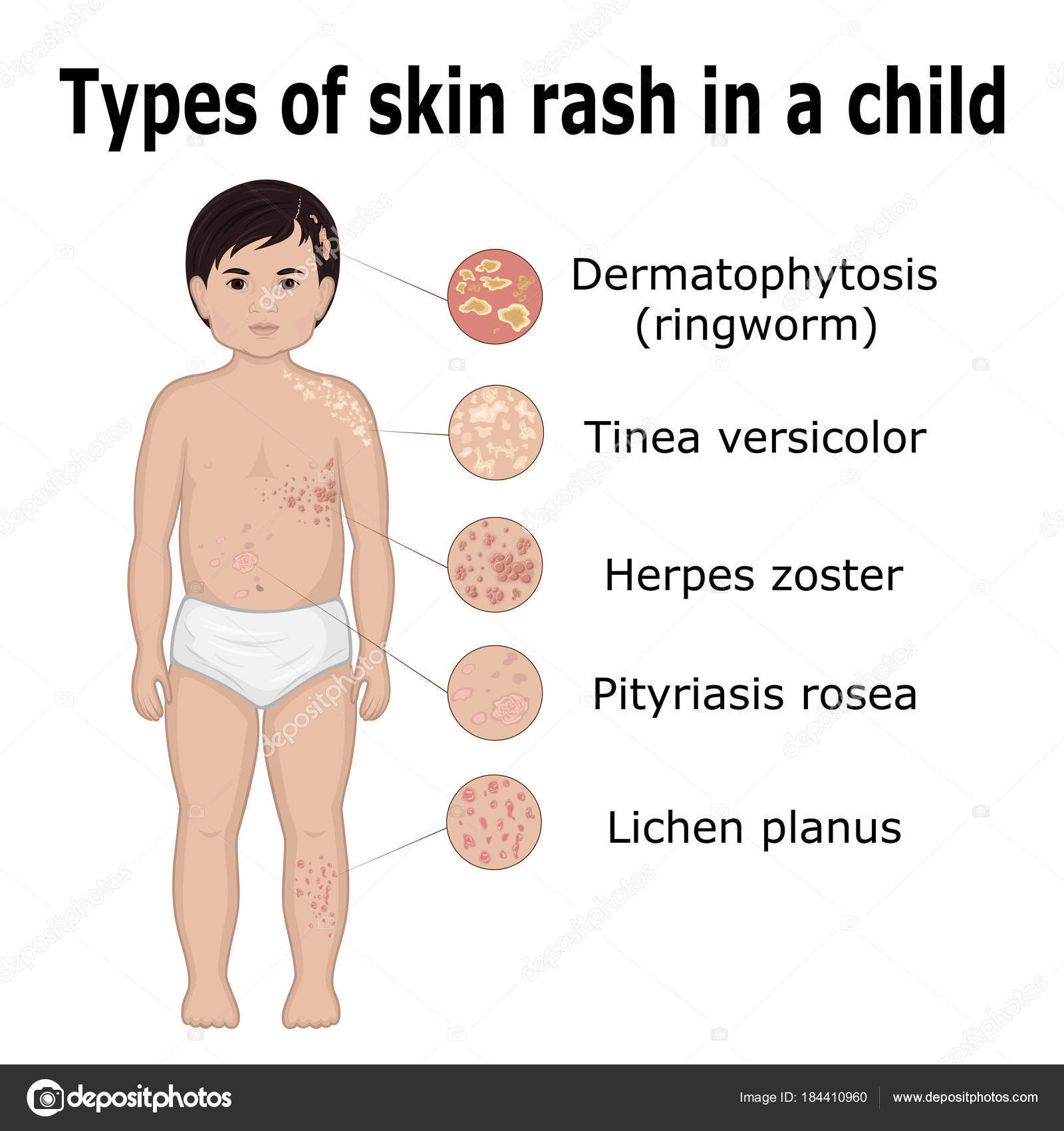 However, bed bug bugs can also appear in more random formations.
However, bed bug bugs can also appear in more random formations.
Treatment
Unless someone has a severe allergic reaction, experts recommend simple self-care practices to treat any bites. These include not scratching, applying OTC antiseptic ointments, and taking antihistamines.
Learn more about bed bugs here.
Contact dermatitis is essentially an allergic reaction that develops when a person’s skin comes into contact with something to which they are allergic, such as latex or certain metals or household products.
It can take 1–2 days for the reaction to develop and 2–3 weeks for symptoms to disappear. Contact dermatitis may hurt as much as it itches, and it may present with inflammation and blisters.
Treatment
Self-care with cold compresses, calamine lotion, and soothing baths can help provide relief.
Prescription medication, such as antihistamines and cortisone, may be necessary if the reaction is severe.
Working with healthcare professionals can help people identify their triggers, which can be complicated.
According to the American Academy of Allergy, Asthma & Immunology, there are more than 3,700 substances known to cause contact allergies. Avoiding triggers is a key part of managing contact dermatitis, along with thoroughly washing the affected area with soap and water after exposure happens.
Learn more about contact dermatitis here.
The human itch mite is responsible for scabies. This mite digs its way through the top layer of the skin and lays eggs. Its tunnels can sometimes be visible on the surface of the skin, where they appear as raised, crooked, skin colored lines. However, the most common symptom of scabies is itchy bumps on the skin. These are like mosquito bites, only smaller.
Sites of the body that this very itchy condition commonly affects include the wrists, the elbows, between the fingers, and behind the knees.
Treatment
Only a prescription lotion will treat scabies effectively, and individuals need to follow the application directions exactly.![]() Anyone who has had extensive skin-to-skin contact with someone with scabies should also seek treatment.
Anyone who has had extensive skin-to-skin contact with someone with scabies should also seek treatment.
It is very important that people with scabies thoroughly wash and dry all of their clothes, towels, sheets, bedding, and other household items. Other remedies for scabies may also help.
Learn more about scabies here.
Also known as atopic dermatitis, this common condition causes itchy, red, irritated skin that can sometimes develop bumps. In the long term, it can make the skin thicker, scaly, and flaky, as well as causing it to change color.
Scratching makes eczema worse and increases the risk of infection. Eczema occurs due to a combination of genetic and environmental factors, which prompt the immune system to overreact to certain triggers, such as laundry soap or sweating. It typically affects the face, elbows, knees, scalp, and backs of the hands.
Treatment
According to the National Eczema Association, treating eczema calls for a mix of self-care, OTC drugs, and prescription medications. People with eczema can identify and learn to manage or avoid triggers for their outbreaks.
People with eczema can identify and learn to manage or avoid triggers for their outbreaks.
Changing bathing practices and using moisturizer can also help. Prescription lotions, systemic medications, UVB light, and biologics can address more severe symptoms.
Learn more about the different types of eczema here.
Skin problems, such as itchy bumps on the skin similar to mosquito bites, can range from mild to severe.
Some issues, including bed bug bites, can be fleeting, while others, such as allergic reactions to certain foods, are signs of a permanent condition. However, most skin problems generally respond well to treatment.
If the symptoms do not improve with self-care practices, people should see a medical professional to determine what is causing the outbreak and how to treat it.
Mosquito bite rash
Skin infections, especially those with a diagnostic sign of rashes, are one of the most common reasons young children go to the doctor. Adults also suffer from this skin problem; however, most of them choose self-diagnosis and self-treatment. Identifying a rash is never an easy task, and it’s even more difficult because one type of mosquito bite-like rash can have different causes and relatively common symptoms.
Identifying a rash is never an easy task, and it’s even more difficult because one type of mosquito bite-like rash can have different causes and relatively common symptoms.
Pay attention to aspects of the rash
Allergic reactions to food, viruses, metals, bacteria and other skin irritants can cause mosquito bite rashes. In most cases, the rash does not indicate a dangerous condition, but in some rare cases it does. When you find a rash, spend as much time as possible paying attention to how the rash looks. Pay attention to how long it has been present, how widespread it is, whether it itches or not, how big and how many spots you have.
what are the 50 states in alphabetical order
Related Articles
- Insect bite rash
- Dengue rash
- Baby rash
The role of histamine
The lining of the skin contains many mast cells that are designed to attack and destroy parasites. These cells carry sacs filled with chemicals, including a protein called histamine. When an allergic reaction occurs in the body caused by an allergen, the body releases histamine. Once in the bloodstream, the fluid leaks out of the blood vessels, accumulates in the skin, and causes a rash. Thus, itching, swelling and irritation.
When an allergic reaction occurs in the body caused by an allergen, the body releases histamine. Once in the bloodstream, the fluid leaks out of the blood vessels, accumulates in the skin, and causes a rash. Thus, itching, swelling and irritation.
Urticaria
Urticaria is a skin disease similar to mosquito bites.
What they look like: Medically, urticaria is smooth, raised, with pink to reddish bumps or wheals that can vary in size. They may also be ring, oval or circle shaped with a pale center and a red halo or flare on the outer edge. The redness of the spots may disappear and turn pale with pressure. Wheat also disappears within minutes or hours and is replaced by newly formed ones. As a rule, bulging bumps appear in groups, covering the whole body or part of it, accompanied by very intense itching.
What causes them: According to the American Academy of Allergy, Asthma and Immunology, hives are often associated with medications and food allergies. Very common triggers are allergic reactions to pollen, pet dander, or seafood. There are many causes of irritating skin allergies, and some of them have unexpected triggers.
Training or exercise: Many people think that a rise in body temperature causes hives. But what actually causes hives is your own sweat.
Cold temperatures: Cold climates can exacerbate the disease in some people. This includes other causes associated with a cold, such as swimming pools or eating chilled food.
Infection Response: Researchers have found that several bacterial and viral infections, including tooth decay, have a role in the development of hives.
Stress: High levels of cortisol (the stress hormone) are associated with chronic urticaria and may exacerbate them.

Sunlight and heat. Although hives are rare, some people get hives after sudden sun exposure. This happens if you were indoors in winter. Your body may suddenly explode and a red, itchy rash will appear on his body. It can also appear in areas that have been covered for several months and then exposed to sunlight abruptly.
Home remedies: The first step is to discover your potential triggers. They must be avoided to prevent hives. Healthy eating habits can reduce the chance of hives. Cool oatmeal baths can also relieve an itchy rash. After bathing, apply topical medications, such as calamine lotion or 1% hydrocortisone cream, to the affected area to relieve itching.
how to get engine oil from concrete
Applying an ice pack to the rash also provides relief. Also, cut your nails short to avoid scratching the rashes. Wear loose clothing to prevent further irritation of the affected skin. Over-the-counter medications such as oral antihistamines are also the preferred choice for blocking the release of histamine (a compound that causes allergic symptoms).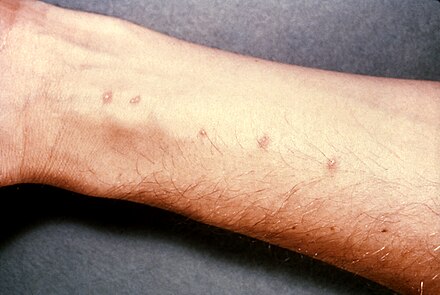
When to see a doctor: If your hives do not go away after home treatment and you have other serious symptoms, such as swelling of the lips and difficulty breathing, go to the emergency room right away. Also, for rashes that are accidentally scratched and have caused an infection due to an open wound, see a doctor.
Heat rash (heat rash)
Heat rash is a condition that causes a rash with bumps on the skin.
What it looks like: Heat rash, also known as prickly heat or sweat rash, is a common condition in humid or hot weather. Heat rash is very similar to hives. It shows red, itchy, raised bumps on the skin. Unlike urticaria, which affects any age group and is widespread, heat rash is smaller and more common in children. It usually appears in places where sweat accumulates, such as the neck, upper chest, or elbow creases.
What causes it: As a rule, skin rash is mainly caused by blockage of the sweat ducts in summer or hot weather. For example, a child who is overdressed under the scorching sun may develop a heat rash. Heavy use of creams also contributes to clogged pores during exercise.
For example, a child who is overdressed under the scorching sun may develop a heat rash. Heavy use of creams also contributes to clogged pores during exercise.
Home remedies: Heat rashes usually resolve within a couple of days after air drying. Loosening and removing clothing will also help. Allow the skin to cool while monitoring the temperature. Stay in air-conditioned rooms or use cold compresses. Other treatment options for heat rash include applying calamine or hydrocortisone creams to soothe the rash. It is also important to avoid other lotions as they can aggravate the irritation of your sensitive skin.
how to clean the outer bottom of pots and pans
When to see a doctor: An increase in heat rash within three to four days is reason enough to seek advice. Immediate medical attention is needed for severe itching and rashes with pus and swelling.
Irritant contact dermatitis
Irritant contact dermatitis may cause a mosquito bite-like rash.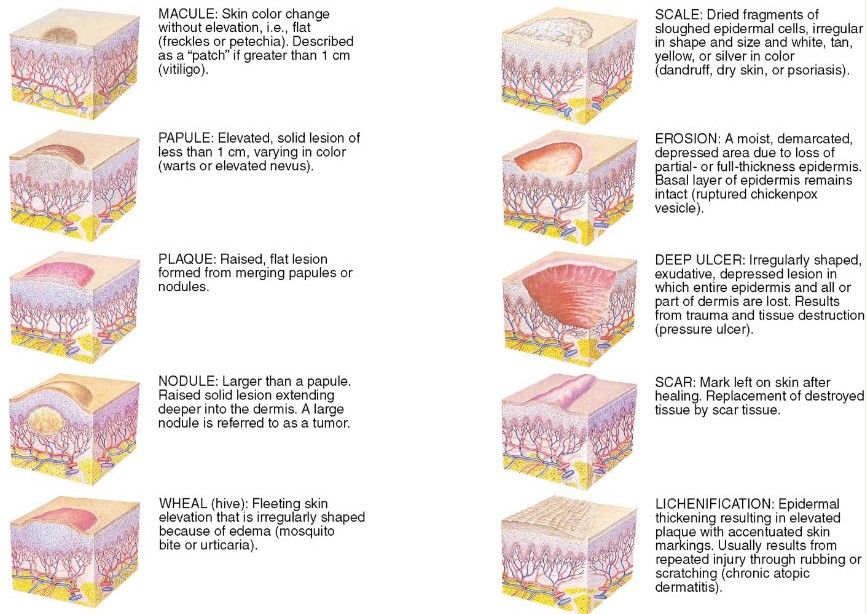
What it looks like: In addition to allergic reaction rashes, a more common type of contact dermatitis is irritant contact dermatitis. At first glance, it can be confused with beehives as it shares most of its characteristics. It starts with a red rash and bumps followed by itchy dry skin. During a hypersensitivity reaction, raised papules form on the skin in the affected areas. A flaky rash may also appear. However, its distribution differs from hives. This type of contact dermatitis affects areas that are only exposed to irritants.
What causes it: The main cause is repeated contact with an irritant that rubs against the skin and damages the surface of the skin. It is caused by a reaction to certain substances, such as detergents, perfumes, cosmetics, soaps, metal jewelry, deodorant, or other personal care products.
things to write to your best friend to make them smile
Home remedies: Avoid anything that causes symptoms. Avoid strong substances that can irritate the skin. The constant friction of clothing fabric makes your skin more susceptible to injury, so choose cotton material over bulky fabrics because they are less irritating. Treat the area with hydrocortisone or anti-itch cream and then take a dose of antihistamines. A moist compress can be applied to relieve mild to moderate symptoms.
Avoid strong substances that can irritate the skin. The constant friction of clothing fabric makes your skin more susceptible to injury, so choose cotton material over bulky fabrics because they are less irritating. Treat the area with hydrocortisone or anti-itch cream and then take a dose of antihistamines. A moist compress can be applied to relieve mild to moderate symptoms.
When to see a doctor: Severe symptoms, such as painful and widespread rashes, require a doctor’s consultation. See an allergist and get a patch test if you can’t pinpoint the cause of the rash. Also, if the rash begins to interfere with your daily activities and causes lack of sleep, seek medical attention.
Looking for the culprit
You don’t have to go to medical school to determine the root cause of a rash. With a bit of acquired knowledge and a few tips on how to check their characteristics, you can prevent them and treat them yourself.
Calorie calculator
Gender:
Age:
Height (in cm):
Weight (in kg):
Physical activity level:
Minimum Low Medium High Very high
90,000 symptoms, causes. Treatment at the Fantasy clinic in Moscow
Treatment at the Fantasy clinic in Moscow
We treat children according to the principles of evidence-based medicine: we choose only those diagnostic and treatment methods that have proven their effectiveness. We will never prescribe unnecessary examinations and medicines!
Make an appointment via WhatsApp
Prices
Doctors
The first children’s clinic of evidence-based medicine in Moscow
No unnecessary examinations and drugs! We will prescribe only what has proven effective and will help your child.
Treatment according to world standards
We treat children with the same quality as in the best medical centers in the world.
Fantasy has the best team of doctors!
Pediatricians and subspecialists Fantasy – highly experienced doctors, members of professional societies. Doctors constantly improve their qualifications, undergo internships abroad.
The ultimate safety of treatment
We have made children’s medicine safe! All our staff work according to the most stringent international standards JCI
We have fun, like visiting best friends
Game room, cheerful animator, gifts after the reception.



:max_bytes(150000):strip_icc()/spider-bite-or-skin-infection-83017-v1-5c4552ce46e0fb0001c168f9.png)
 Some examples are:
Some examples are: